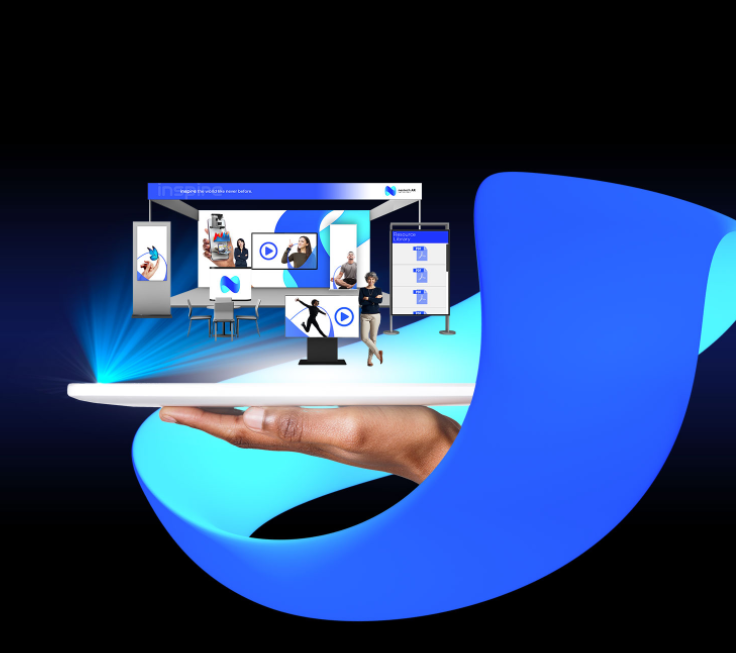Augmented reality (AR) remains a fairly new concept for many companies, but that hasn’t stopped them from quickly realizing its potential.
Big names like AMC, IKEA, and Nike have all proven that AR is more than just a fun trend. It’s a brand-new marketing technology that’s here to stay.
Yet, it’s also changing in a big way, one that companies need to understand if they’re going to leverage its potential.
3 Reasons Augmented Reality Needs to Move Beyond the App
While a number of companies are following the examples of these household names and investing in AR to reach their goals, many are also making a very simple mistake: they believe augmented reality requires its own dedicated app.
Mobile apps provided a great launching pad for augmented reality, especially when the technology was extremely popular. Unfortunately, the heyday of apps is effectively over.
If your company had been considering an app to support its augmented reality strategy, it’s important that you consider its drawbacks.
1. Cost-Per-Installation Continues to Rise
The cost-per-installation (CPI) is an extremely important metric to consider before developing your company’s app.
In 2018, the average acquisition cost for apps was $4.58, but that doesn’t tell the whole story:
“While on average globally it costs marketers $4.58 to get a user to install an app, it costs significantly more to get them to take action once they’ve installed it. To get a purchase, for example, it costs marketers about 10 times the cost of an install — around $53.11. And a subscription? Nearly three times the marketing cost of a purchase at $148.01.”
Can a new and exciting technology like AR help drive CPI costs down?
Probably. Let’s continue to explore why.
2. Market Saturation
Apps just aren’t the attention-grabbers they once were.
With more than 5 million apps available on the App Store and Google Play, it’s become increasingly difficult for companies to make theirs stand out. Unless you have a detailed marketing plan that involves a major publicity push before launch, your new app will face a steep uphill climb.
Furthermore, even if your app is able to break through all that noise and grab your market’s attention, it then faces market saturation on your users’ actual phones.
Research shows that almost 85% of smartphone app time is spent on just the top 5 apps.
Again, is it possible that your company’s AR app will break through into that top five? Of course.
But if that doesn’t happen, your investment is left fighting over the 15% of app time that’s left over (keep in mind, that’s app time, not even screen time).
3. Most Apps Don’t Last Long
Despite all the work many companies put into creating their mobile apps, they don’t last very long.
- 38% are uninstalled within the first 24 hours.
- 64% will be gone by the end of the first month.
- After 12 months, 89% of all apps have been uninstalled.
So, while new apps will probably continue to make headlines from time-to-time, it’s important to keep in mind that those are exceptions and that the “rule” is low download rates and even less impressive staying power.
Why Web-Based AR is the Future of Augmented Reality
In short, users don’t want to go to the trouble of finding an app and downloading it. They don’t want it taking up space on their devices, especially as they go longer and longer without even opening the app.
Fortunately, augmented reality’s future isn’t intertwined with that of mobile apps. Instead, web-based AR solutions are leading to the charge. They allow users to enjoy augmented reality experiences simply by visiting a website.
Large brands aren’t the only ones running towards AR. Mr Steak, VancuumCleanerMarket.com, GWN Dragon Boats among a handful of innovative small businesses took part in the shift towards web based AR experiences During this holiday season.
These experiences can also be delivered through social media, web ads, and even emails.
Major Operating Systems Have Opened the Doors
One of the most compelling signs that augmented reality has really caught on is the interest tech giants have shown in making the technology available to developers.
Last year, Google made waves when their VP of business and operations for VR, Amit Singh, predicted that:
“There will be hundreds of millions of phones that will be AR ready. And the current stage is … we are helping developers … build the experiences … so that it becomes a daily habit.”
When Google predicts something will become “a daily habit” and they back that up by adding its functionality to all of their new Android devices, it’s probably a safe bet that you’ll be seeing a lot more of that technology in the future.
Underscoring this belief is Google’s introduction of the “Immersive Web”, which will make virtual- and augmented reality experiences available on any device that supports them simply through the browser.
Apple hasn’t been shy about its love for augmented reality, either. Their new range of iPhones supports the technology and, with their latest AR-friendly iOS, Apple encouraged users to, “Imagine if the line between the virtual and the real simply didn’t exist.”
Combine that with Safari’s new AR Quick Look feature and you have the recipe for millions of users enjoying augmented reality right from their devices without any need for an app, whatsoever.
Over the summer, Shopify’s head of AR and VR, Daniel Beauchamp, tweeted out a demonstration that showed just how easy it is for shoppers to jump into augmented reality right from Safari. Of course, he also pointed out that the experience could easily end with a purchase, something many companies probably paid attention to.
More Companies Will Utilize Augmented Reality Than Ever Before
Without the need to download an app and then loading it every time they want to use it, expect more and more people to begin enjoying augmented reality on a regular basis (even “daily” as Google predicts).
Likewise, without the extraneous costs involved with creating and marketing an app, expect more companies to meet this demand.
Will yours be one of them?
If you’d like to offer your market an AR experience, NexTech AR Solutions is here to help. Contact us today and let’s talk about how our technology can help your organization meet its most ambitious goals.







